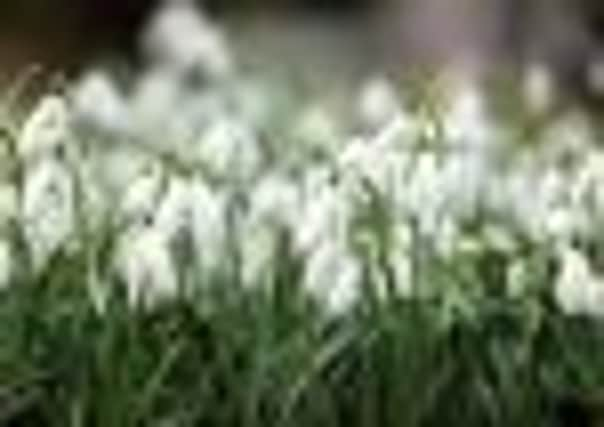Carry on flowering


It’s a sad reflection on a delightful family of bulbs which do their utmost to make the winter and early spring a brighter place. Whereas tall flowers leave behind the problem of tatty foliage, the snowdrop (Galanthus) becomes inconspicuous after the last flower fades, and is so often tucked away in corners and beneath shrubs and trees, that it becomes an instant, distant memory.
The thoughtful gardener will, however, never forget anything which can put on a brave face when winter is doing her worst. And now snowdrops, and to a lesser extent, their cousins, the leggy snowflakes, will be in the minds of many because the ground is covered in carpets of white.
Advertisement
Hide AdAdvertisement
Hide AdAnd in a few weeks, that same thoughtful gardener may well be preparing to plant even more snowdrops.
Strange though it may seem, clumps of Galanthus bulbs, lifted and planted immediately after they have finished flowering, will fare far better than the wrinkled, dry bulbs which are offered for sale in autumn. Those sad apologies for a splendid spring flower take time to acclimatise, whereas bulbs planted in March – “in the green”, which is a way of saying they have finished blooming but are still heavy with foliage – will carry on as though nothing has disturbed their world. For that reason, many gardeners watch until the final flower has bloomed, then they dash out, lift and divide clumps, and replant them. It’s a cheap, easy way of propagating the species and ensuring an increased display of flowers next year.
Snowdrops like shady spots; under trees, in grass, but they are capable of growing and thriving just about anywhere as long as the soil is fertile and free-draining.
There are scores of varieties, many derived from the common snowdrop, Galanthus nivalis, ranging in size from the miniature to the tall-growing forms which, on a good day, and if they are standing to attention, might make six inches.
Advertisement
Hide AdAdvertisement
Hide AdLike all bulbs, they are self-contained cannibals, feeding on the goodness from their own foliage. So, after flowering, they should be left alone until the leaves have yellowed. Cut them down early and the quality and quantity of next year’s show will be diminished.